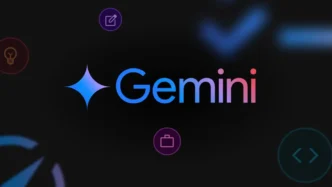Crafting a compelling cybersecurity press release is tough. You might spend hours preparing a detailed announcement about a new security product, vulnerability, or threat report—only to see it buried in overflowing inboxes. With journalists receiving dozens or even hundreds of pitches daily, only the most relevant and newsworthy stand out.
If you’re struggling to get coverage, you’re not alone. But the good news is, there’s a smarter way to write and pitch cybersecurity press releases—one that blends strong storytelling, clarity, and smart use of AI tools.
Why Most Cybersecurity Press Releases Fail
Cyber PR is fiercely competitive. The biggest reason your pitch isn’t landing? It’s not journalist-friendly. Here’s why many cybersecurity press releases fall flat:
- Too technical: Press releases often assume the reporter has deep cybersecurity knowledge. Most don’t.
- Overloaded with buzzwords: Many announcements bury the key message under layers of corporate jargon.
- Feature-focused: Writers often highlight product specs instead of the real-world problem being solved.
- Lack of strong data: Reporters want stats, research, or evidence they can cite—not vague claims.
In truth, journalists aren’t trying to promote your product. They’re looking for timely, relevant stories their audience will care about. The better you understand this, the better your cybersecurity press release will perform.
So how can you get it right?
How AI Can Supercharge Your Cybersecurity Press Release Strategy
AI tools can make a big difference in every stage of your cyber PR campaign—from research to writing to visuals. Here’s how to use AI to give your next press release an edge:
1. Smarter Research
Before you start writing, use AI to spot trends in cybersecurity news. Tools like ChatGPT or Gemini can analyze hundreds of past press releases and news stories to identify what kinds of topics get picked up. This helps you align your message with what’s working in the media.
AI can also run sentiment analysis to see how different audiences react to various cybersecurity threats or topics. Use this insight to fine-tune your message so it resonates more deeply with your target readers.
2. Writing Support
Clear writing is critical. If your announcement is hard to understand, it won’t get read. Use a large language model (LLM) to help simplify technical language without losing meaning. It can rewrite complicated descriptions into plain English while keeping your message strong.
Need a great headline? Ask your AI tool to generate a list of attention-grabbing options. You can also have it review your draft to spot overly technical terms or unclear sentences.
3. Engaging Visuals
Sometimes, words aren’t enough. That’s where visuals come in. Use AI image generation platforms like Midjourney to create custom illustrations or infographics that bring your story to life. These can make your cybersecurity press release more appealing to both journalists and readers.
4. Video Boosts
Take it a step further by turning parts of your release into short videos. AI tools like Synthesia and Pictory let you convert text into videos using avatars or animated visuals. These clips can act as summaries or explainers that give reporters quick insight into your story.
You can also animate key stats from your press release. This helps journalists visualize the data and increases the chance they’ll use it in their own reporting.
Final Thoughts
AI won’t write a winning cybersecurity press release for you—but it will absolutely help you write one faster and better. The most powerful releases still rely on human insight, compelling storytelling, and a clear understanding of what matters to reporters.
Don’t just list product features. Instead, highlight the real impact. Talk about the people behind your discovery. Explain the risks you’re helping users avoid. And show why your announcement deserves attention now.
When you combine AI automation with human creativity, you get cybersecurity press releases that stand out—and get published.













